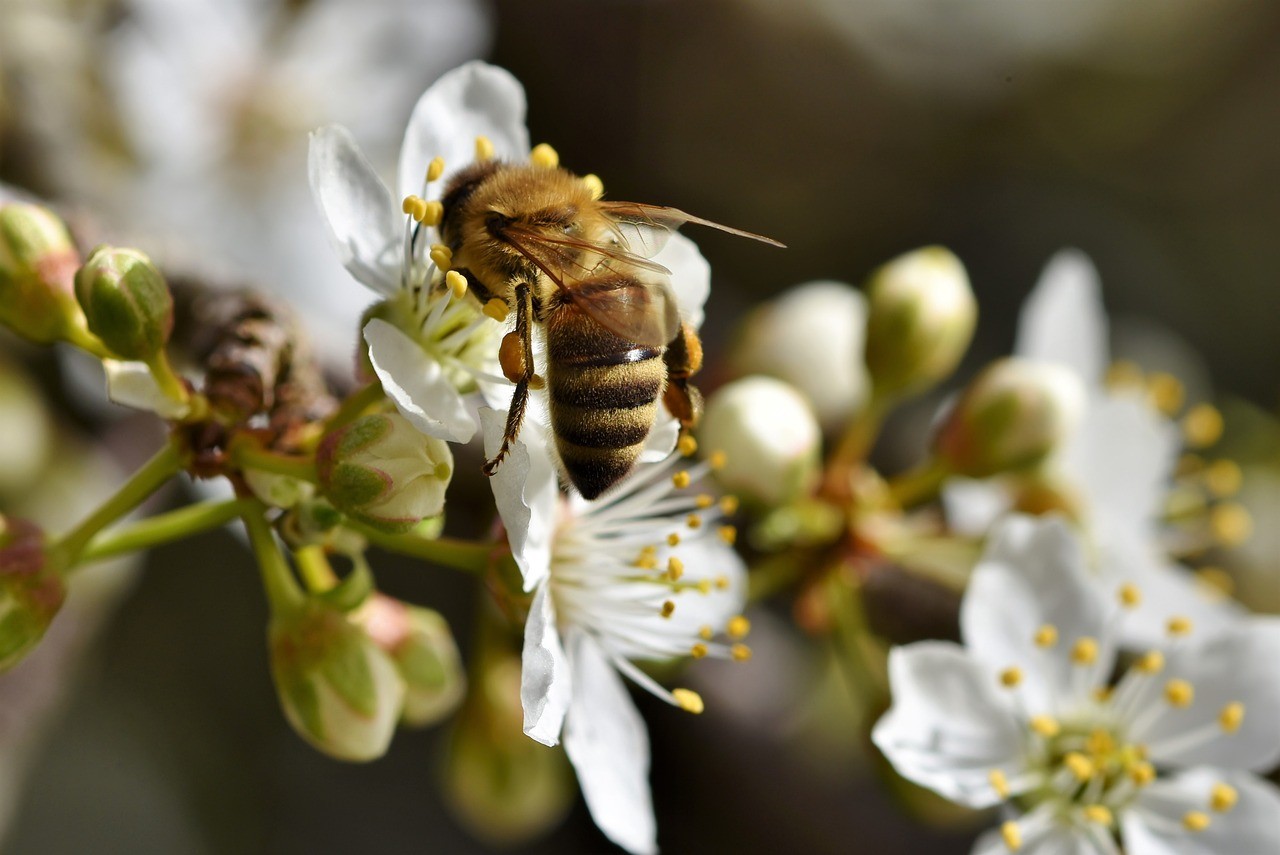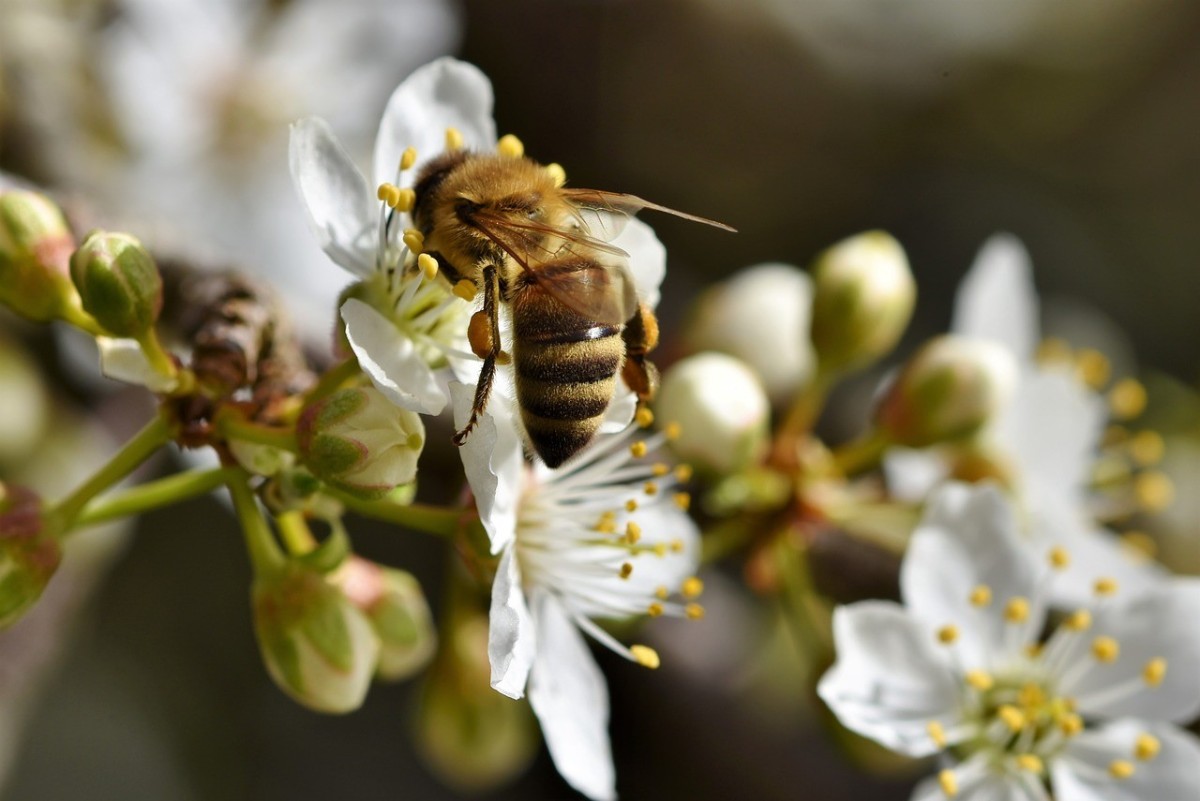Most plants flower to produce seeds so their line will continue through their off spring.
When it comes to our gardening efforts we want plants such as tomatoes, zucchini and pumpkins to produce fruit which in every case contain the seeds for the next generation of those plants.
When pollination does not happen then the fruit will only develop a little and then rot.
Pollination is the act of transferring pollen grains from the male anther of a flower to the female stigma.
The goal of every living organism, including plants, is to create offspring for the next generation. One of the ways that plants can produce offspring is by making seeds.
Every year I receive enquiries about what is wrong with my zucchini/pumpkin/melon/cucumber?
They flower and the fruit appears and then it goes yellow and rots?
The reason is that the female stigma did not receive a few grains of pollen from the male flower anther.
When it comes to the likes of pumpkins, melons and zucchini I always hand pollinate to be sure of a fruit set.
Best done in the morning where you check your plants for female flowers.
That is the flower that has the embryo fruit behind the petals.
When you find one or more then you look for a young male flower (which does not have the embryo fruit) but has anther that is covered with pollen.
I prefer to pick the male flower and remove the petals exposing the anther.
Then I rub the anther against the stigma and thus pollinating it and setting the fruit.
Bees, bumble bees and some other flying insects may do this for you as there is a little nectar that the flowers produce to encourage the flying insects to visit and move pollen from flower to flower.
Now things don’t always work as you would like them to work and sometimes a fruiting plant does not produce any flowers.
This can happen if the plant does not get enough direct sunlight, there is not sufficient energy to produce flowers,
It can also happen if the plant is well fed and well watered instead of flowering it will vegetate producing lots of new foliage minus any flowers.
I call them Fat Cats, well fed and very lazy.
If this is the case with any Curcubitaceae family member which is a large family that includes melons, cucumbers, zucchini and squashes you can take male pollen from say a pumpkin flower and fertilize a female zucchini flower to set the fruit.
It could also mean that there is a lack of potash so it pays to sprinkle some Wally’s Fruit and Flower Power onto the soil at the time flowering should start.
Then we have Self-pollinating, self-fertile and self-fruitful all mean the same thing.
You can plant a self-fertile tree and expect it to pollinate itself and set fruit alone (for example, peaches, pie cherries, apricots).
Self-fertilization, fusion of male and female gametes (sex cells) produced by the same individual.
Self-fertilization occurs in bisexual organisms, including most flowering plants, numerous protozoans, and many invertebrates.
Tomatoes are not pollinated by bees instead it is air movement on a sunny day that will do the job.
In a glasshouse or even outdoors its a good idea in the middle of a sunny day give the plants a gentle shake to set the fruit.
To grow tomatoes in the cooler months or though winter you need types that will produce pollen in the colder times to have fruit set. Summer growing tomatoes will survive with protect but may not produce fruit.
Winter ones are Russian Red and Sub Arctic Plenty (from Kings Seeds) World’s earliest tomato. Bred for the U.S. Greenland military bases to endure extremely cold climates.
Producing concentrated clusters of medium, good flavored, red fruit that ripen almost simultaneously. A very small plant with compact habit so excellent for anyone interested in growing in pots. Determinate.
Blossom end Rot on tomatoes is the dark patch under the fruit that is the result of lack of moisture to move the calcium at fruit set time.
The fruit sets but the bottom has the dark patch.
After picking the bottom part can be cut off and the rest of the tomato eaten.
If not done the whole tomato will rot on vine or in a container after picking.
Tomatoes grown in containers are prone to this problem as they dry out quickly in hot weather and need watering like two or three times a day. Alarge saucer under the container that is full of water will help.
Corn is another one that depends on lots of sun and a bit of a breeze to move the pollen from the male stalks at the top down onto the ‘silks’ of the female cobs.
Planting lots of sweet corn plants near but not too close to each other will help.
On a still sunny day you can shale the plants to allow the pollen to drift down onto the silks.
Corn varieties will easy cross pollinate if grown near to each other so keep your pop corn, ornamental corn and maize types well away from your sweet corn.
To sum up with fruiting vegetables and fruit we want them to be pollinated and set fruit for our food chain.
But in our flower garden the reverse applies we don’t want the flowers to be pollinated because once that happens the petals fall off and a seed pod forms.
If like on lilies you were to carefully cut off the male anthers to prevent pollination then your flowers would last a lot longer.
Once the flowers on a plant have set then if you cut them off the plant (we call it dead heading) then the plant is likely to produce more flowers as it wants to produce seeds.
We do that with roses to encourage a second flush and not only do we cut off the dead flower and rose hip (that is the seed pod) we cut back the stem a little to encourage new growth which can also produce new flowers.
Some gardeners use a small soft brush to collect pollen from male flowers to Fertilise the females and that is a nice way of achieving fruit set.
Fruit trees that flower but produce no mature fruit because of a lack of pollinators such as honey bees or bumble bees it pays to use a brush between some of the flowers on a sunny day to set some fruit on the lower branches.
Idea of planting flowering plants to attract honey bees may bring then to your bee loving plants but not to your fruit tree as bees are selective and generally speaking will work one type of flower only at any given time.
Bumble Bees are not so discrmitant and will work several different types of flowers as available.
Figs are very different: The crunchy little things that you notice when eating a fig are the seeds, each corresponding to one flower. Such a unique flower requires a unique pollinator. All fig trees are pollinated by very small wasps of the family Agaonidae.
The pollinators of fig tree flowers are tiny gall wasps belonging to several genera of the hymenopteran family Agaonidae. Gravid female gall wasps enter a developing syconium through a minute pore (the ostiole) at the end opposite the stem)
The wasp is long gone by the time the fig crosses your lips. Figs produce a chemical called “ficin” that breaks down the wasp bodies.
Nature is so resourceful.
Phone 0800 466464
Garden Pages and News at http://www.gardenews.co.nz
Shar Pei pages at http://www.sharpei.co.nz
Mail Order products at http://www.0800466464.co.nz
New Zealand Bill of Rights Act 1990. Part II of the Act covers a broad range of Civil and Political Rights. As part of the right to life and the security of the person, the Act guarantees everyone:
1The right not to be deprived of life except in accordance with fundamental justice (Section 8)
2The right not to be subjected to torture or to cruel, degrading, or disproportionately severe treatment or punishment (Section 9)
3The right not to be subjected to medical or scientific experimentation without consent (Section 10)
4The right to refuse to undergo any medical treatment (Section 11)
Furthermore, the New Zealand Bill of Rights Act 1990 guarantees everyone: Freedom of Thought, Conscience, and Religion.
This includes the right to freedom of thought, conscience, religion, and belief,
INCLUDING THE RIGHT TO ADOPT AND HOLD OPINIONS WITHOUT INTERFERENCE (Section 1)
Photo: pixabay.com
Related posts:
Views: 0
 RSS Feed
RSS Feed
















 February 18th, 2023
February 18th, 2023  Awake Goy
Awake Goy 

 Posted in
Posted in  Tags:
Tags: 
















